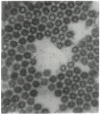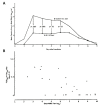In the shadow of hemagglutinin: a growing interest in influenza viral neuraminidase and its role as a vaccine antigen
- PMID: 24960271
- PMCID: PMC4074938
- DOI: 10.3390/v6062465
In the shadow of hemagglutinin: a growing interest in influenza viral neuraminidase and its role as a vaccine antigen
Abstract
Despite the availability of vaccine prophylaxis and antiviral therapeutics, the influenza virus continues to have a significant, annual impact on the morbidity and mortality of human beings, highlighting the continued need for research in the field. Current vaccine strategies predominantly focus on raising a humoral response against hemagglutinin (HA)-the more abundant, immunodominant glycoprotein on the surface of the influenza virus. In fact, anti-HA antibodies are often neutralizing, and are used routinely to assess vaccine immunogenicity. Neuraminidase (NA), the other major glycoprotein on the surface of the influenza virus, has historically served as the target for antiviral drug therapy and is much less studied in the context of humoral immunity. Yet, the quest to discern the exact importance of NA-based protection is decades old. Also, while antibodies against the NA glycoprotein fail to prevent infection of the influenza virus, anti-NA immunity has been shown to lessen the severity of disease, decrease viral lung titers in animal models, and reduce viral shedding. Growing evidence is intimating the possible gains of including the NA antigen in vaccine design, such as expanded strain coverage and increased overall immunogenicity of the vaccine. After giving a tour of general influenza virology, this review aims to discuss the influenza A virus neuraminidase while focusing on both the historical and present literature on the use of NA as a possible vaccine antigen.
Figures





References
-
- Wright P.F., Neumann G., Kawaoka Y. Orthomyxoviruses. Fields Virol. 2013;2:1693–1740.
-
- The World Health Organization . Influenza (Seasonal): Fact Sheet No. 211. The World Health Organization; Geneva, Switzerland: 2009.
Publication types
MeSH terms
Substances
Grants and funding
LinkOut - more resources
Full Text Sources
Other Literature Sources
Medical

